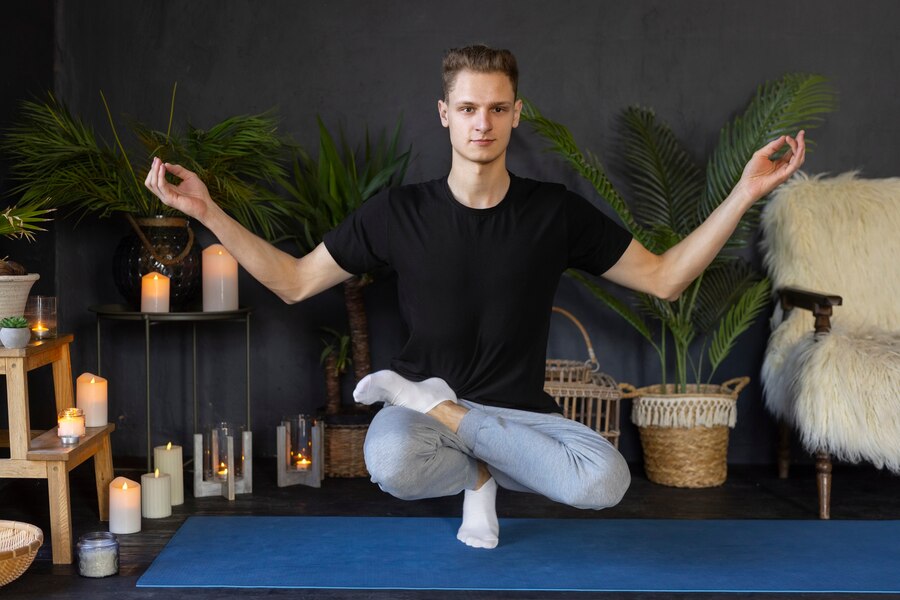Mindful Living can often feel like a whirlwind of responsibilities, deadlines, and constant stimulation. Amidst this chaos, finding moments of peace and tranquility becomes essential for our overall well-being. Relaxation techniques offer a valuable pathway to unwind, destress, and recharge our minds and bodies. In this article, we’ll explore various relaxation techniques, their benefits, and how you can incorporate them into your daily routine.
1. Understanding Relaxation
Relaxation is a state of calmness and reduced tension in both the mind and body. It involves intentionally shifting our focus away from stressors and allowing ourselves to unwind.
2. Importance of Mindful Living Relaxation Techniques
In today’s fast-paced world, the importance of relaxation techniques cannot be overstated. These practices provide a vital counterbalance to the pressures of modern life, promoting mental clarity, emotional stability, and overall health.
3. Types of Relaxation Techniques
Breathing Exercises
Simple yet powerful, controlled breathing techniques such as diaphragmatic breathing or “belly breathing” help calm the nervous system and induce relaxation.
Progressive Muscle Relaxation
This technique involves tensing and then releasing different muscle groups, promoting physical relaxation and reducing muscle tension.
Meditation
Meditation cultivates mindfulness and awareness by focusing the mind on the present moment. It helps reduce stress and enhances emotional well-being.
Yoga
Yoga combines physical postures, breathing exercises, and meditation. It improves flexibility, relieves tension, and promotes relaxation.
Mindfulness
Create a Calm Environment
Find a quiet space free from distractions where you feel comfortable and relaxed.
Set Aside Time for Relaxation
Schedule dedicated time for relaxation in your daily routine, even if it’s just a few minutes.
Start with Deep Breathing
Begin with deep, slow breaths to calm the mind and body.
Practice Regularly
Consistency is key. Make relaxation techniques a regular part of your lifestyle to experience their full benefits.
5. Benefits of Relaxation Techniques
Reduces Stress and Anxiety
Relaxation techniques lower cortisol levels and reduce the impact of stress on the body and mind.
Improves Sleep Quality
Relaxation promotes better sleep by calming the nervous system and easing insomnia.
Enhances Focus and Clarity
Regular practice of relaxation techniques sharpens focus and enhances cognitive function.
Promotes Emotional Well-being
By reducing stress, relaxation techniques foster emotional stability and resilience.

6. Conclusion
Incorporating relaxation techniques into your daily routine can significantly improve your quality of life. Whether it’s through deep breathing, meditation, or yoga, taking time to relax is an investment in your overall health and well-being.
FAQs of Mindful Living
How do I know which relaxation technique is best for me?
Experiment with different techniques and choose the one that resonates most with you and fits into your lifestyle.
How long should I practice relaxation techniques each day?
Aim for at least 10-20 minutes daily, but even a few minutes of relaxation can have benefits.
Can relaxation techniques help with chronic pain?
Yes, relaxation techniques can reduce muscle tension and alleviate pain associated with chronic conditions.
What if I struggle to quiet my mind during meditation?
It’s normal for thoughts to arise during meditation. Acknowledge them and gently redirect your focus to your breath or mantra.
Can children benefit from relaxation techniques?
Absolutely! Simple relaxation practices can help children manage stress and improve focus and emotional regulation.
-
You’ll also like this:
-
6 Healthy Snack Recipes for Pregnant Women to Avoid Cravings
-
Ready for Detox? Know 7 Benefits of Star Anise Infused Water
Must visit the home page:
-




